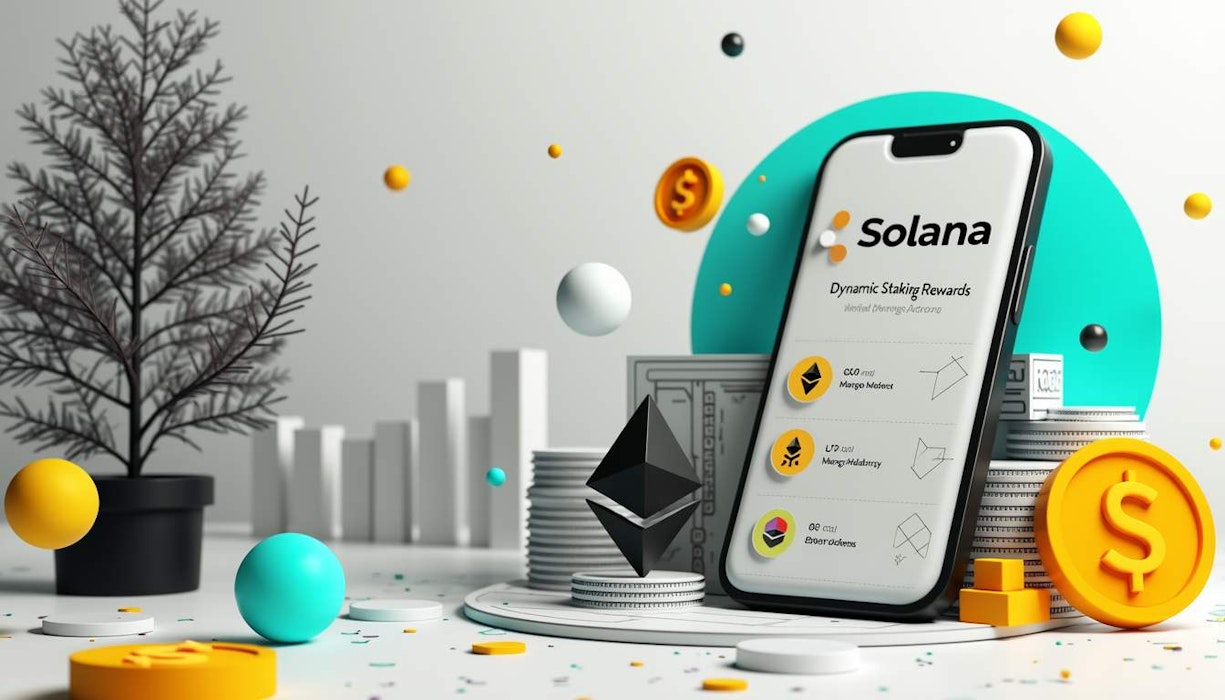The crypto landscape is ever-changing and right now, Solana, Binance Coin, and BlockDAG are at the forefront with their new strategies and developments. Solana's distinct inflation model, Binance Coin's rising price trends, and BlockDAG's partnership with HackerEarth are all shaking up the digital currency exchange game. Let’s take a closer look at these shifts, particularly how Solana's inflation model stacks up against traditional fixed inflation frameworks and what it means for investors.
Solana's Inflation Model Explained
What is this new inflation model that Solana is touting? Well, it aims to link staking participation directly to inflation rates. This means the more people stake, the more the inflation rate adjusts, which can enhance network security and decentralization. At the same time, it offers solid rewards for staking. Here are some key features of this model: - The inflation rate kicks off at 8% once it's enabled. - It disinflates at a rate of 15% per epoch year. - Ultimately, it aims for a stable, long-term inflation rate of 1.5%.
This kind of setup encourages validators and stakers to put in the effort to secure the network, while gradually lowering the inflation rate as time goes on. This could make it more appealing for investors who want to see a secure network.
Traditional Inflation Models vs. Solana's Approach
Now let’s contrast Solana's model with the more traditional fixed inflation models that you might find in fiat currencies or some cryptocurrencies like Bitcoin.
Fixed Supply Versus Inflationary Supply
Bitcoin, for instance, has a capped supply which can create scarcity and potentially drive prices up as demand increases. Solana’s inflationary model, however, will keep increasing the supply. This could lead to less scarcity and possibly lower prices if demand doesn't keep up.
Flexibility in Monetary Policy
Unlike the rigid monetary policies of fixed supply models, Solana’s approach is more flexible. While this flexibility may be attractive to investors who appreciate adaptability, it can also introduce a level of unpredictability.
Incentives for Investors
Solana's model isn’t exactly designed for those seeking a store of value. It encourages spending and participation, which might not sit well with investors who prefer holding onto their assets. Conversely, fixed supply models like Bitcoin encourage holding, which can be more appealing for long-term storage of value.
What This Means for Investors
What does this mean for investors? There are some clear advantages to this model that could be attractive.
Incentives for Network Security
First off, the inflationary rewards go to validators and stakers, which could bolster investor confidence in the network’s security. This is a plus for anyone looking to invest, as it could mean a more robust and secure network.
Price Pressure from Supply Growth
However, the ever-increasing SOL supply could also mean downward pressure on SOL's price, especially if demand doesn’t keep pace. This could be a downside for investors hoping for stable or rising prices.
Token Burning Mechanism
On the flip side, Solana has a token burning mechanism that takes a portion of transaction fees, which may help offset some of the inflationary impact and provide some support for the token's price. This is a nice touch for those looking for ways to control supply growth.
The Importance of Blockchain Technology
Blockchain technology plays a significant role in Solana’s strategy. Its transparent nature helps ensure the inflation model is implemented securely. This tech also allows for the dynamic adjustments of inflation rates based on staking, making Solana a strong digital currency trading platform.
Competing Against Other Platforms
In the grand scheme, Solana’s model positions it well against other trading platforms like Binance and Coinbase. The combination of flexibility and security from Solana's blockchain technology makes it appealing to both investors and developers. As digital currency exchanges evolve, Solana's innovative approach could set a new standard.
Summary: A New Era in Digital Currency
Solana's inflation model brings a set of unique incentives and challenges for investors. By providing incentives for validators and stakers, introducing a token burning mechanism, and maintaining a flexible monetary policy, Solana carves out a niche in the crowded digital currency platform space.
Future Outlook
For investors, Solana's strategy offers a mix of security, rewards, and adaptability. While the continuous supply growth may pose challenges, the network’s solid security measures and innovative inflation approach make it worth considering.
Impact on the Digital Currency Ecosystem
As Solana works on refining its model and expanding its reach, it stands to make a significant impact on the digital currency landscape. By catering to the needs of validators, stakers, and investors alike, Solana is paving the way for a new chapter in digital currency trading platforms.
